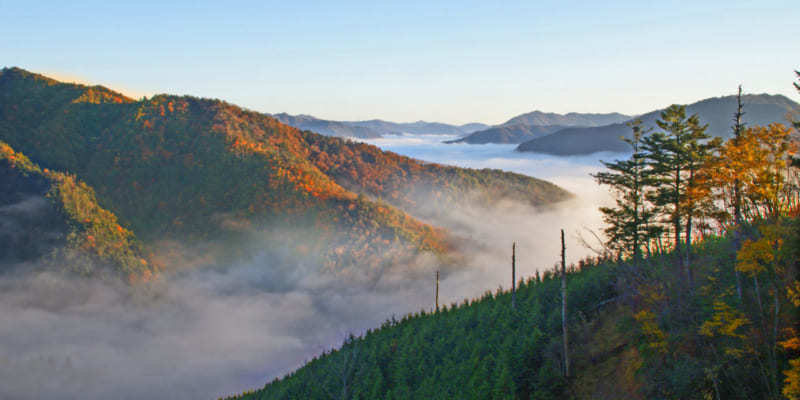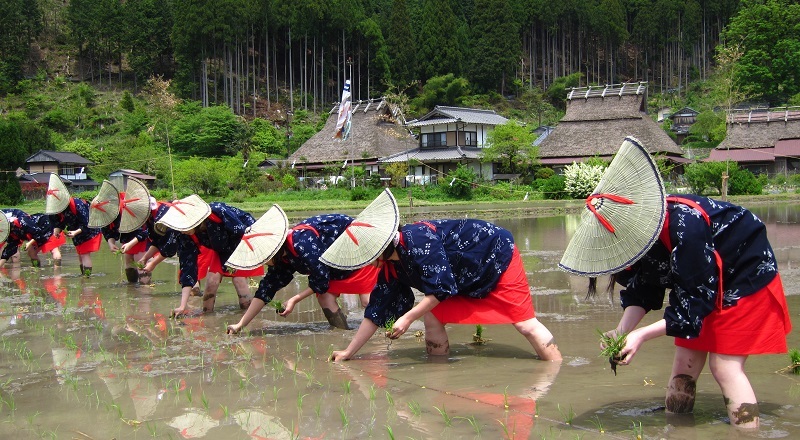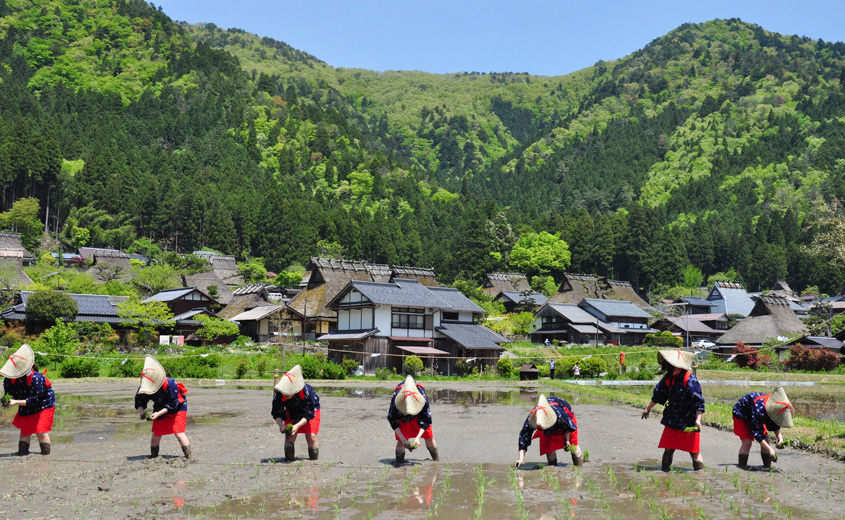Miyama: the Kyoto mountain retreat
The region of Miyama lies just 50 kilometres north of Kyoto City; surrounded on all sides by mountains, it is a pristine wilderness where the traditional country lifestyle of Satoyama still flourishes.
Miyama Geography
The 57 hamlets that collectively make up the Miyama region are spread out across its 340-square kilometre expanse of mountains and valleys. The pristine waters of the Yura River flow through the heart of Miyama and all the settlements lie close to its banks. Until tunnels were built in the beggining of 20th century, the region was only accessible by passes through the surrounding mountains. These ancient footpaths thread their way through the mountains, leading to Fukui and the Japan Sea to the north, Shiga and Lake Biwa to the east, and Kyoto City, the ancient capital, to the south.

History of Miyama
Miyama lies between the Japan Sea of Fukui prefecture and Kyoto City, the ancient capital. The Fukui coastline is a rich fishing ground and is best known for its prized mackerel, which, in days gone by, were packed in salt and rushed down to Kyoto by special couriers. These mackerel couriers ran some 80 kilometres while crossing three small mountain ranges, carrying up to 50 kilograms of mackerel. Setting off from the coast in Fukui at first light, the couriers arrived in Kyoto the following morning. The paths through the hills, known as the mackerel highway or saba kaido, still exist and parts of the trail can be walked with a guide. For many centuries, this saba kaido was one of the main links connecting the valleys of Miyama to the rest of Japan.
Miyama was also on the route taken by Buddhist monks as part of their training. This involved walking from Kyoto’s Mount Hie (where monks still live and train today), up though the mountains of Miyama, and on to the coast of the Japan Sea at Wakasa. These long treks, combined with prayer and helping strangers along the way, formed the basis of the monks’ ten-year training period.
During the Sengoku period (1470-1603), various leaders struggled for control of Japan, and a number of rampaging armies passed through Miyama. When hostile armies arrived, the villagers had to flee their homes with what provisions they could carry, and haul them up into impenetrable mountain forts. Several of the foundations of these forts can still be seen on the mountainsides, but you’ll need a guide to hike up to them.
For the most part, the people of Miyama have enjoyed a largely secluded and self-sufficient lifestyle over the thousand years since they settled these valleys. Each hamlet still has its own Shinto shrine and Buddhist temple where weddings, births, deaths and other events are celebrated. Many of the celebrations and ceremonies in Miyama revolve around the growing of crops, from the planting of rice in the spring, to the harvest festivals expressing gratitude for the crop in the autumn.

Satoyama culture
The word Satoyama "里山" – meaning village in the mountains – embodies the ancient Japanese art of living in harmony with nature, using the natural resources around you whilst taking care to manage and preserve them. The essence of Satoyama culture is gratitude and appreciation for nature and all it provides.
Encircled by a ring of steep mountains, the people of Miyama have practiced and perfected the cultural tradition of Satoyama for countless generations.
Sustainable Tourism in Miyama
Today, approximately 3,500 residents in Miyama continue to prcotect the beautiful landscape and the cultural tradition of Satoyama in their daily lives.
People in Miyama proudly share their sustainable lifestyle with travelers through providing locally produced foods, traditional lifestyle accommodations as well as various experiences of sustainable living.
Travelers visiting Miyama are also expected to respect the beautiful Satoyama landscape and the sustainable lifestyle for passing on to the next generation.
Please enjoy a new travel style "sustainable tourism" in Miyama to preserve traditions, celebrate diversity, provide opportunities and safeguard biodiversity for passing on sustainable society for future generations.










